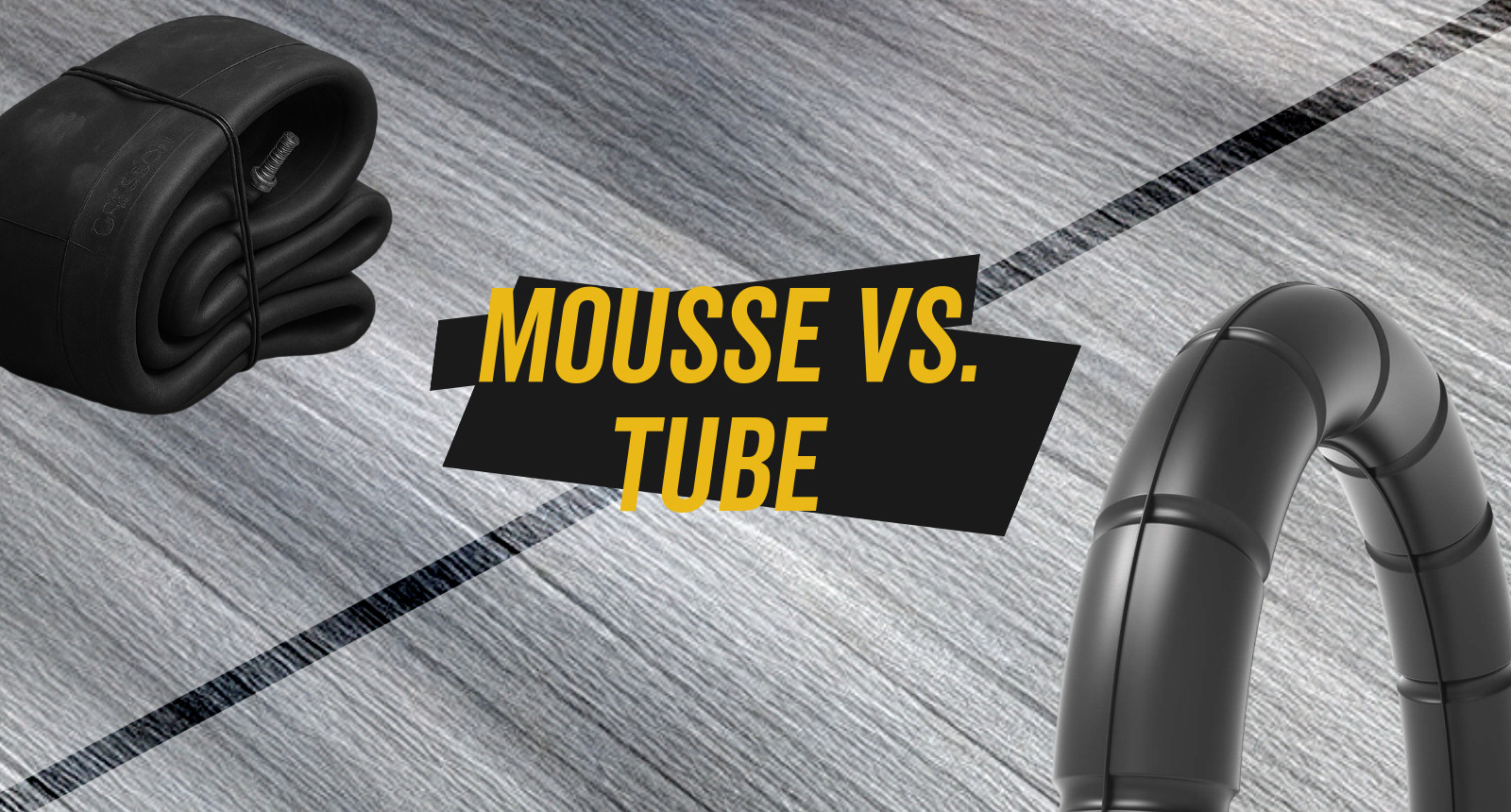Mousse vs. Tube – What’s the Best Choice for Racing?
When it comes to off-road racing, one thing matters most: reaching the finish line without a flat. This is exactly where a tyre mousse has a clear advantage over a traditional tube. Imagine your tube bursts in the middle of a race – you'd have to stop and change it, costing valuable time. That can’t happen with a tyre mousse because it is puncture-proof and ensures consistent performance right to the finish line. Mousse always makes sense, even in enduro racing where you can ride flat-free through any terrain.
Tube – Quality Makes the Difference
A tube can also be a good option – as long as it’s high quality. Premium tubes offer longer lifespan and are more resistant to punctures or pressure loss. However, the risk of a flat still remains – especially in demanding races or on off-road terrain.
What Tyre Pressure Does Mousse Compare To?
The GibsonTyre Soft Mousse is the softest version and simulates a pressure of approx. 0.6 bar. The medium-hard mousse simulates a tyre pressure of approx. 0.8–0.9 bar compared to a conventional tube, while the Gibson Hard Mousse is the hardest version and corresponds to approx. 1.2 bar. These are of course only guideline values that can vary depending on tyre choice, mousse density, and operating temperature. Ultimately, these values also depend on ambient temperature and rider weight.
Why is it advisable to use GibsonTyre Mousse rather than a tube? Using mousse in the tyre guarantees a completely flat-free ride. Flat tyres, leaks, torn valves and more are a thing of the past. What makes GibsonTyre Mousse so special and sets it apart from mousse products by other manufacturers?
Grooves
- Gibson Mousse features so-called grooves that clearly differ in both surface and structure from most mousse products on the market. These grooves offer two key advantages over competing products:
More Effective Heat Dissipation
- During installation, the grooves absorb additional mousse gel. This leads to better gel distribution and thus more efficient heat dissipation.
- Gibson Mousse reduces heat build-up by up to 10°C compared to conventional mousse products, significantly increasing durability.
Optimised Riding Characteristics
- Thanks to the structure of the grooves, the mousse density changes. This increases the tyre’s contact patch, providing better traction, maximum grip, and precise steering.
Does the Ride Feel Differ Between Tube/Tyre and Mousse?
A mousse rebounds more slowly than an air-filled tube. This is due to the material’s inertia. Some riders initially report a somewhat unstable ride feel. This sensation usually occurs only during the adjustment phase after switching from tube to mousse. After a day of riding on mousse, this feeling typically disappears.
Mousse does not tolerate high speeds. The rear wheel may start to oscillate heavily, mousse temperature can rise dramatically, and this may even result in mousse damage. So – definitely avoid high speeds!
How Complex is Mousse Installation Compared to a Tube?
Installing a mousse is definitely different from installing a traditional tube. While a tube allows you to run almost zero pre-pressure, it is only partially possible to reduce the volume of a mousse. "Partially" means that you can minimally compress the mousse using pressure from your knees once it’s inside the tyre and the tyre has already been pulled over one side of the rim. The mounting instructions included with every Gibson Mousse explain the installation process. If you're unsure, it's advisable to seek help from a specialist retailer for the first installation.
Conclusion
For maximum safety and performance in racing, mousse is the better choice. It eliminates the risk of flats and ensures consistent riding characteristics. However, if you choose a tube, be sure to go for high quality to ensure durability.




